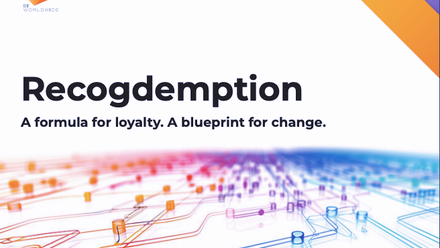What the EU Pay Transparency Directive means for employee benefits
At a glance: How to prepare for the EU Pay Transparency Directive
- Understand the data sources for benefits, which may include individual employees, and talk to suppliers
- Build an inventory for benefits, including what is offered to new joiners, legacy benefits, and individual arrangements
- Develop a methodology for categorising work and workers
- Develop a valuation process for benefits – some will be more straightforward than others
- Consider how technology can collate and report information
- Develop oversight of global benefits offerings.
The EU Pay Transparency Directive has been developed to tackle the average 13% difference between men and women’s earnings in Europe.
All 27 member states must transpose the directive into national law by 7 June 2026, and employers will have up to a year to start complying.
Key to the regulations is strengthening the principle of equal pay for equal and equal-value work between men and women and ensuring employers don’t discriminate in any of their reward structures on the grounds of sex.
The directive applies to public and private sector employers with operations in any EU country, covering direct employees and fixed-term contractors receiving benefits.
Temporary employees – for example, someone from the UK working and being paid in Germany – may also come under the regulations. This, however, is yet to be decided and will depend on how individual member states choose to interpret the law.
Under the directive, EU entities employing 150 or more people must report on an annual basis any gender pay or benefits gaps and the proportion of female and male staff receiving complementary or variable components.
Although the UK is no longer part of the EU, many UK businesses will have entities affected by these regulations.
It is also an indication of the wider trend towards greater pay and benefits transparency.
The UK government strengthened gender pay gap reporting requirements in the Employment Rights Bill.
Once enacted, large employers with more than 250 employees will have to publish action plans for closing their gender pay gaps.
They will also be required to include outsourced workers in their figures.
Industry Insight: Justine Woolf, consultancy lead, Innecto
How each EU country transposes the full directive will vary, and because most countries haven’t shared how they will transpose the directive, organisations are still very much in the dark.
France, for instance, already has a gender pay reporting threshold for companies with 50 employees, which is lower than the directive requirements.
Companies should do the maximum to report, including developing global strategies to report and analyse pay and benefits.
It’s in every organisation’s interest to progress the agenda – even if your company is in the UK and doesn’t have EU operations.
There’s evidence that people won’t apply for jobs if they don’t see pay ranges in adverts, and companies could lose employees who don’t think their pay and benefits are fair.
Even though the directive doesn’t apply to UK-only companies, if you are trying to attract talent from elsewhere in the world, they will expect the same level of openness and transparency.
Top tips for reward and benefits:
- Put objective, robust analytical job evaluation frameworks in place so you can analyse any gaps by job level objectively
- Don’t rely on market data for your justification if you have pay gaps – there are often inherent gender biases in market data.

Justine Woolf
The requirements in practice
The directive aims to increase transparency and enforcement mechanisms.
Employers must assess comparable work in a gender-neutral manner, using criteria including skills, effort, responsibility, and working conditions.
These criteria – and how employers determine reward and job progression – must be made easily available to employees.
Companies should also remind the workforce annually of their right to request and receive this information in writing.
Industry Insight: Adam Mason, executive vice president global, Benefex
The directive presents a unique opportunity to refine total rewards strategies and more effectively communicate the full value of employee compensation.
The challenge is that organisations will need to gather pay and benefits data across multiple sources, including HR systems, payroll, insurers, brokers, and advisors.
Given that each member state will likely have its own thresholds and guidelines, this task becomes even more complex for companies operating in multiple countries.
In addition to improving the employee experience and supporting transparency, total reward statements are a powerful way to consolidate reward data and establish a consistent reporting framework.
Top tip for reward and benefits:
- Communicate the full picture of employee rewards using total reward statements.

Adam Mason
Job adverts and titles must be gender neutral, and applicants have the right to information about the initial pay or ranges before interview.
In the interests of enforcing the principles of equal pay and increasing visibility, employees can disclose their pay and benefits to others.
Employers cannot ask candidates for their salary history. The aim is to avoid the continuation of any historical pay disparities.
Any gaps in pay and benefits for equal value work above 5% that cannot be justified by objective, gender-neutral criteria must be remedied by the employer in co-operation with workers’ representatives, within six months.
Comapnies which do not comply risk compensation claims with no upper limit.
Industry Insight: Kay Leach, MMB multinational advisory UK leader, Mercer
Imagine a company that provides all employees in a country with the same private medical insurance. However, one employee has opted into the coverage, while another has opted out.
Under the EU Pay Transparency Directive, you may be required to assign a value to this benefit for each employee, but what value should you include?
Both employees have access to the same coverage, indicating no discrimination in the provision of benefits. However, only one employee has chosen employer-paid coverage.
While there is no difference in the benefits they are eligible for, the methodology used could result in different values being included in the gender pay gap calculation.
If the employee who opted out is a man, how does this affect your gender pay gap? What if it is a woman? Determining your approach to meet the reporting requirements will be crucial.
Although the comparison of pay, including benefits, is conducted by job category, the increased transparency may reveal other areas of inequity.
For instance, if you offer more generous life insurance benefits (higher multiples) for executives, can you continue to justify this practice, and on what grounds? What is the underlying ethos of this policy?
Top tips for reward and benefits:
- Compile a comprehensive inventory. Create a detailed inventory of all benefits offered, including eligibility criteria and entitlements
- Review underlying policies. Examine the policies that were referenced to establish these benefits.
- Adjust policies as necessary. Consider whether policies and related benefits need to be modified in light of EU Pay Transparency reporting requirements.
- Develop a clear communication strategy to convey the information to your employees. This will not only be critical for compliance with the new regulations but will also aid in recruitment and retention efforts.

Kay Leach
Benefits transparency
The directive’s definition of pay includes the value of benefits and occupational pensions, but it does not provide guidance on how to calculate the cost of non-cash benefits at an individual level.
Non-cash benefits include meal vouchers, annual leave, life, health and disability insurances, stock options and retirement lump sums.
Many organisations may lack the robust processes to regularly review and measure the value of these benefits, making collecitng information and setting critera significantly more complex for benefits than pay.
Local tax and social security regimes may also mean benefits are not uniform across different countries. Different interpretations of the directive across different EU states will add to the complexity.
Employers need to be ready to explain any differences for female and male employees in eligibility.
Before they can do that, they need to identify, measure and report every employee’s benefit offering.
Industry Insight: Rachel Gibbs, founder, Merities Consulting
Companies are going to need to compare roles across the organisation, and level jobs in terms of the benefits for those roles.
For example, if a car is provided to someone working in sales out travelling, who may be male, employers will need to document their processes and decisions in their pay policy especially why that car is not provided to, for example, a woman working in a similarly valued role in accounts.
In this case there is a business reason for the car, but it will be important to understand the detail and take a cross functional approach to benefits in the company.
Legacy benefits will be the hardest to value and assess, such as different pensions for employees who have been transferred following mergers and acquisitions.
Companies need to think about how they can justify legacy packages as a business requirement and consider whether such benefits are problematic.
Top tips for reward and benefits:
- Start by going through contracts and policies to see what benefits you offer and who you offer them to
- Review your business requirements in benefit packages, especially around perk arrangements and legacy benefits
- Consider future benefit offers for candidates and how these can impact the organisation's pay and benefit equity arrangements.








